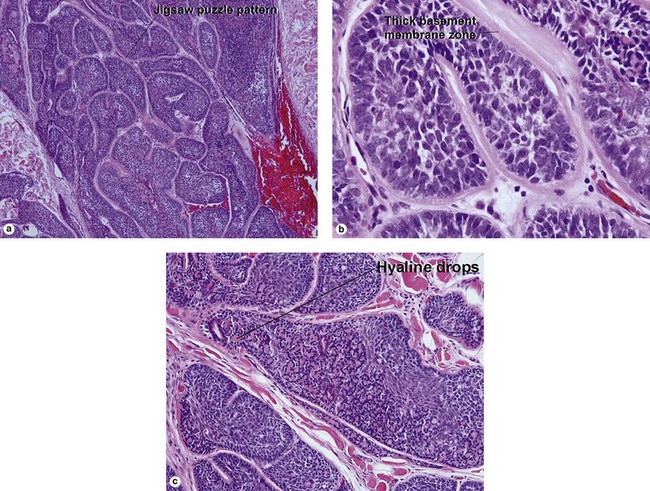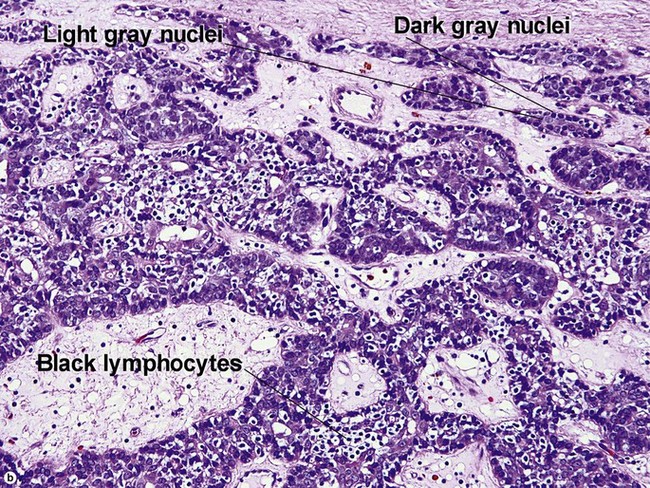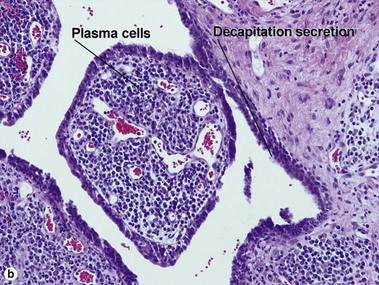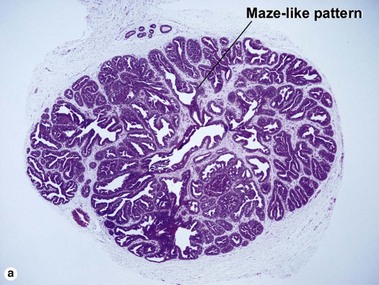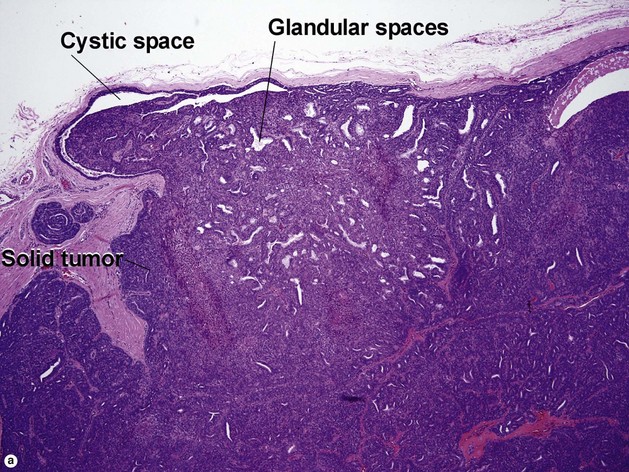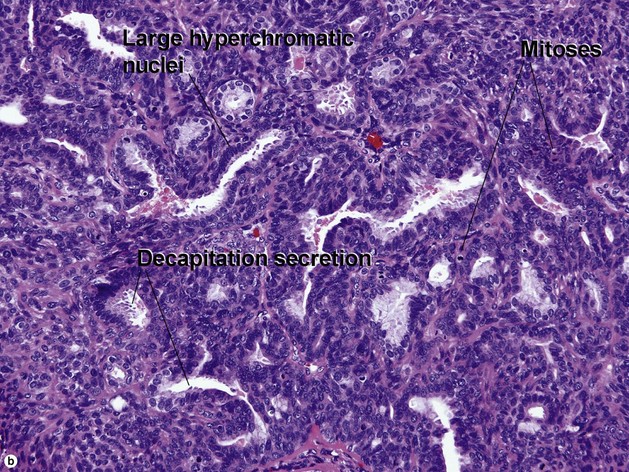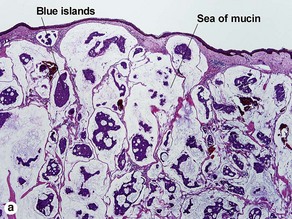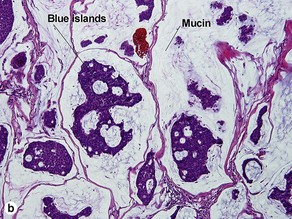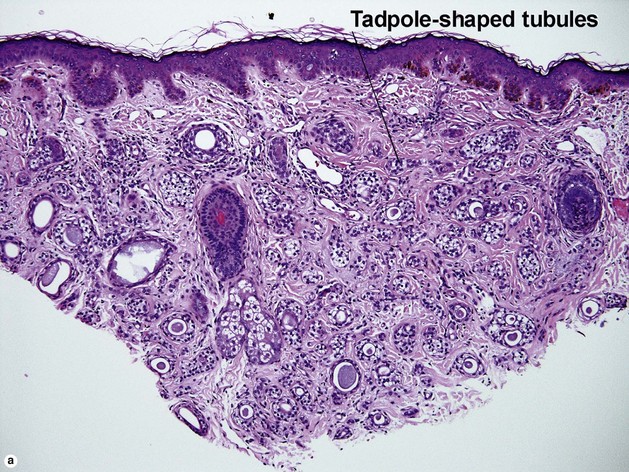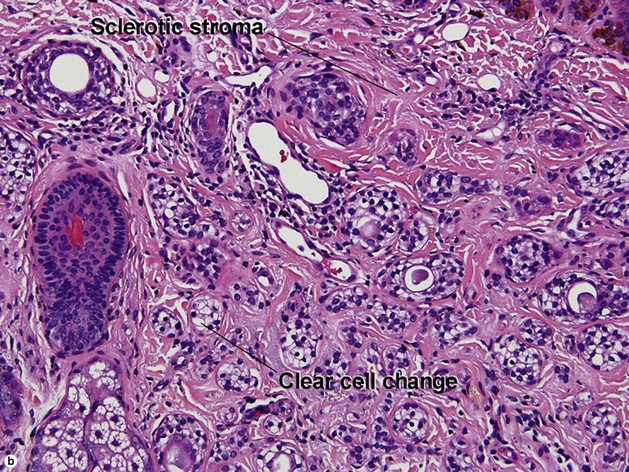Sweat gland neoplasms
Spiradenoma
Table 5-1
Characteristics of cylindroma versus spiradenoma
| Characteristic | Cylindroma | Spiradenoma |
| Blue cells with little cytoplasm | Yes | Yes |
| Dark and pale blue nuclei | Yes | Yes |
| Peppered with black lymphocytes | No | Yes |
| Hyaline droplets in nests | Yes | Yes |
| Jigsaw-puzzle pattern | Yes | No |
| Deeply eosinophilic basement membrane | Yes | No |
| Inheritance | Autosomal dominant | Sporadic |
| Tender | No | Yes |

